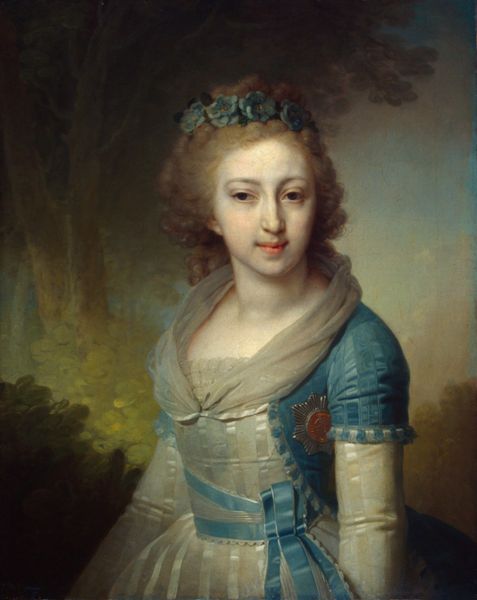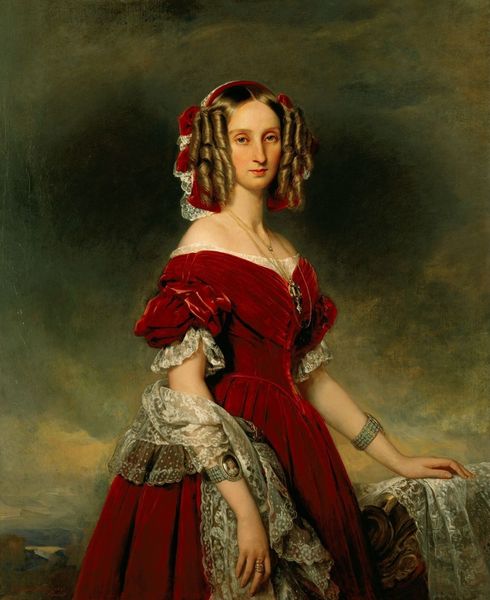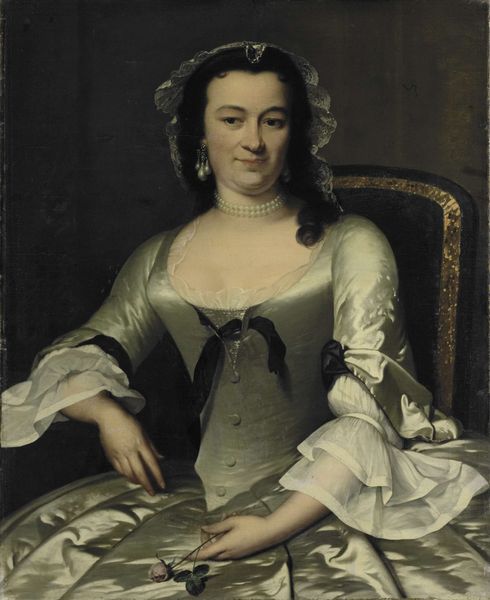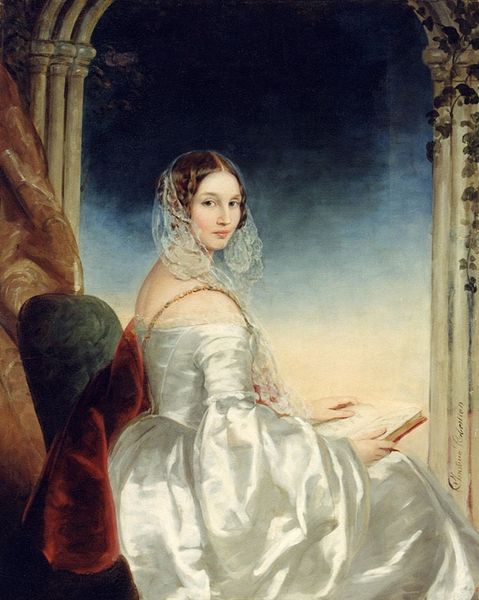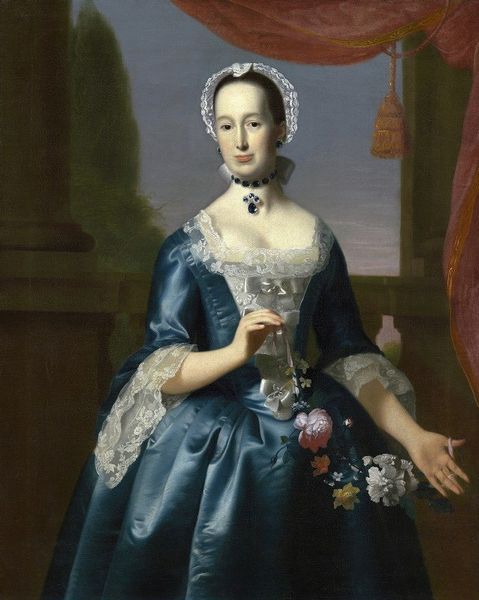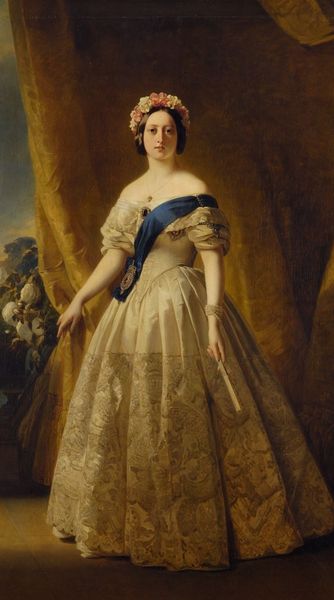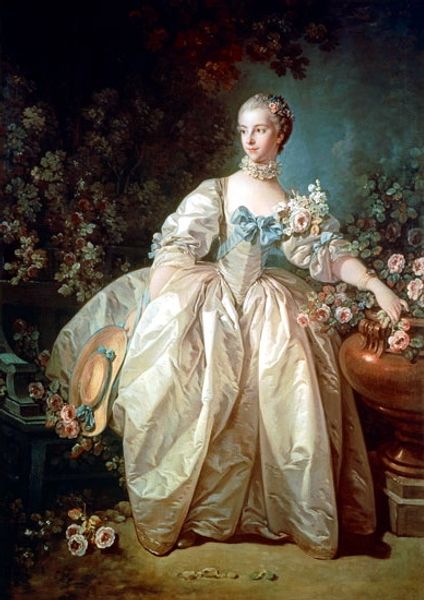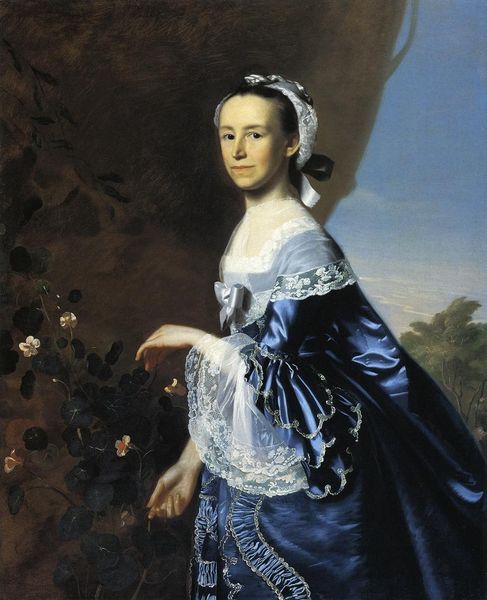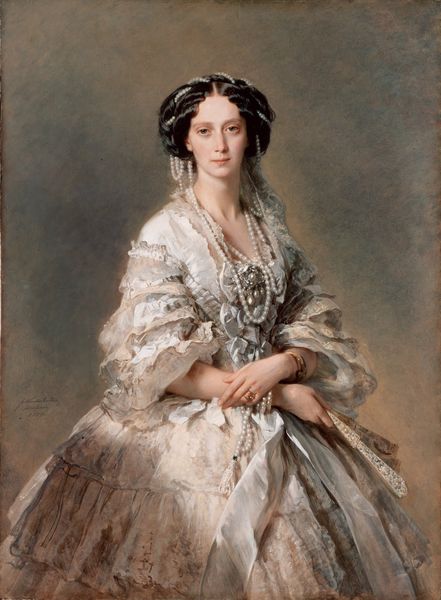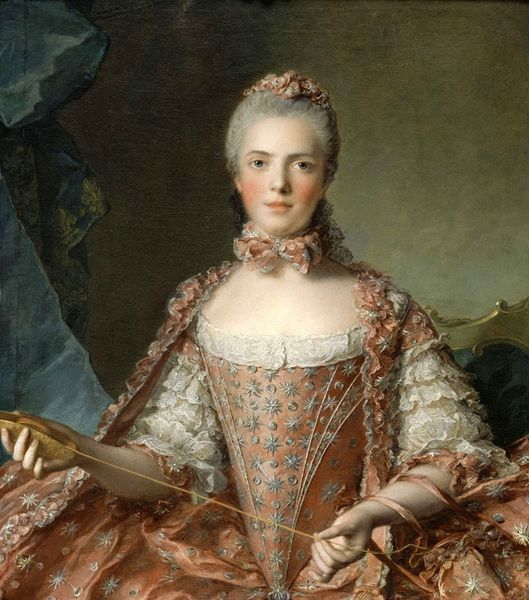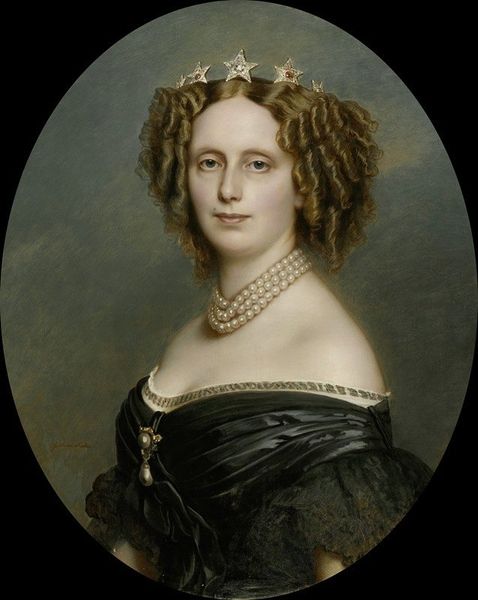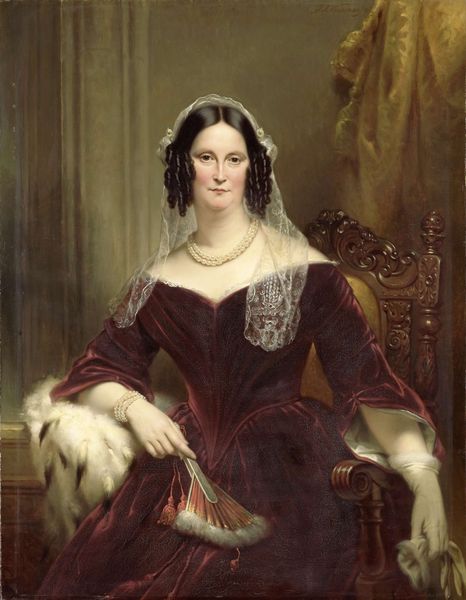
Agatha Petronella Hartsen (1814-78). In bruidstoilet ter gelegenheid van haar huwelijk met Jan van der Hoop op 17 maart 1841 1841
0:00
0:00
janwillempieneman
Rijksmuseum
painting, oil-paint
#
portrait
#
character portrait
#
painting
#
oil-paint
#
figuration
#
character sketch
#
intimism
#
group-portraits
#
romanticism
#
character illustration
#
history-painting
#
academic-art
#
realism
Dimensions: height 107.5 cm, width 89 cm
Copyright: Rijks Museum: Open Domain
Curator: Jan Willem Pieneman painted this portrait in 1841. It’s titled *Agatha Petronella Hartsen (1814-78). In bruidstoilet ter gelegenheid van haar huwelijk met Jan van der Hoop op 17 maart 1841.* Editor: Oh, my. Look at her. The soft lighting, the pristine white dress, it all whispers of such tender innocence. Yet, there’s something… contained in her expression. A quiet compliance, perhaps? Curator: Precisely! She's captured at a pivotal moment—on her wedding day, transitioning into a new societal role, a prescribed future. It’s painted with such delicacy, a certain polished romanticism in its execution. Editor: The painting style echoes the sentiment; however, I sense a subtext. Who was Agatha outside this image? This portrait performs the very act of surveillance and confinement of women through the institution of marriage. It raises questions about gender and power dynamics. The delicate lace is exquisite, no doubt, yet it also could function as a kind of net or a cage… a very attractive cage! Curator: That's an interesting point, because, look, there are symbols that indicate her position: the floral headpiece, the vase of flowers behind her—visual shorthand for virtue and fertility, really. And the fact that Pieneman memorialized this moment immortalized in oil paints—affirms her status within Dutch society. I do like her eyeglasses in her hands though. She seems pretty confident as a whole to need them to face the world. Editor: But the eyeglasses! How subversive—to depict an upper-class bride with her eyeglasses, acknowledging her intellect and active engagement with the world, beyond mere ornamental status. Although there may be multiple ways of considering this… a very subtle subversion… It makes me wonder what other quiet acts of rebellion she might have undertaken. Curator: So, the artwork becomes this battleground then of societal expectations and, potentially, female agency. It speaks volumes, even silently. We can imagine Agatha after this moment. Editor: Exactly. Art history must continually ask: whose stories were prioritized? Who profited? How do we read silences? And what impact will an image such as this continue to have? Curator: In any case, it is something special in seeing someone depicted during that period; it allows for introspection. Editor: It is indeed. Agatha makes one wonder what a "love story" is in art.
Comments
No comments
Be the first to comment and join the conversation on the ultimate creative platform.
